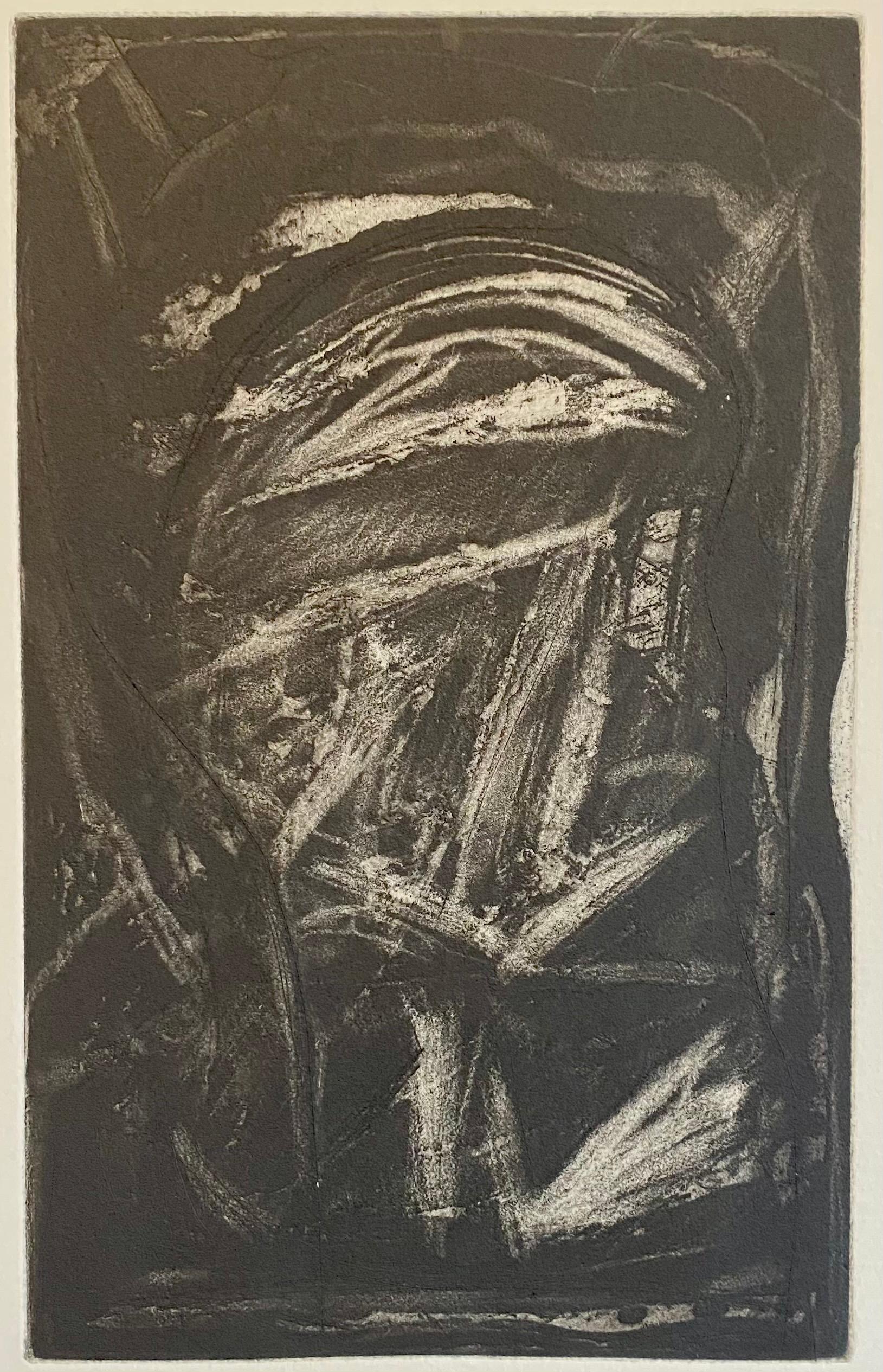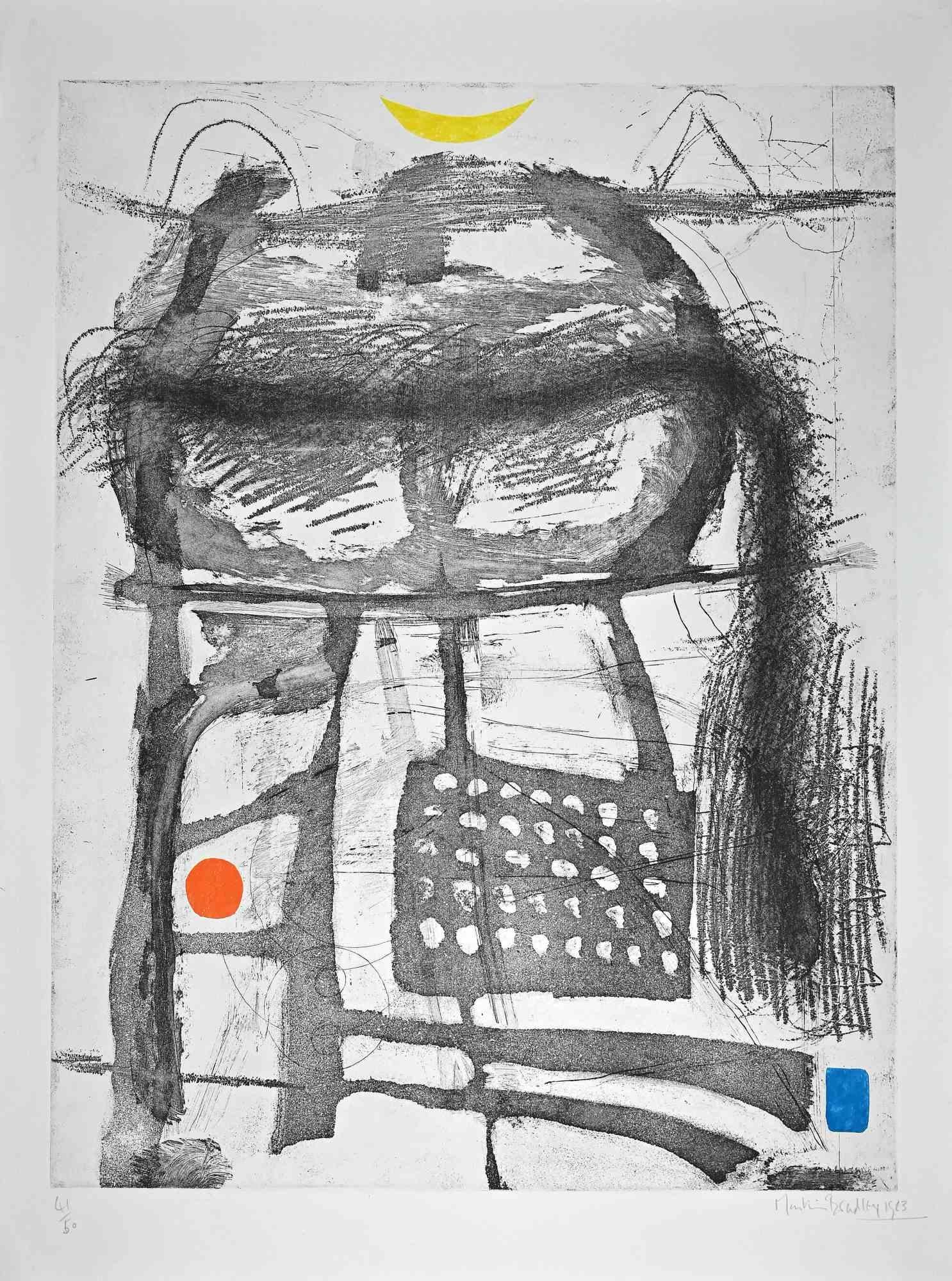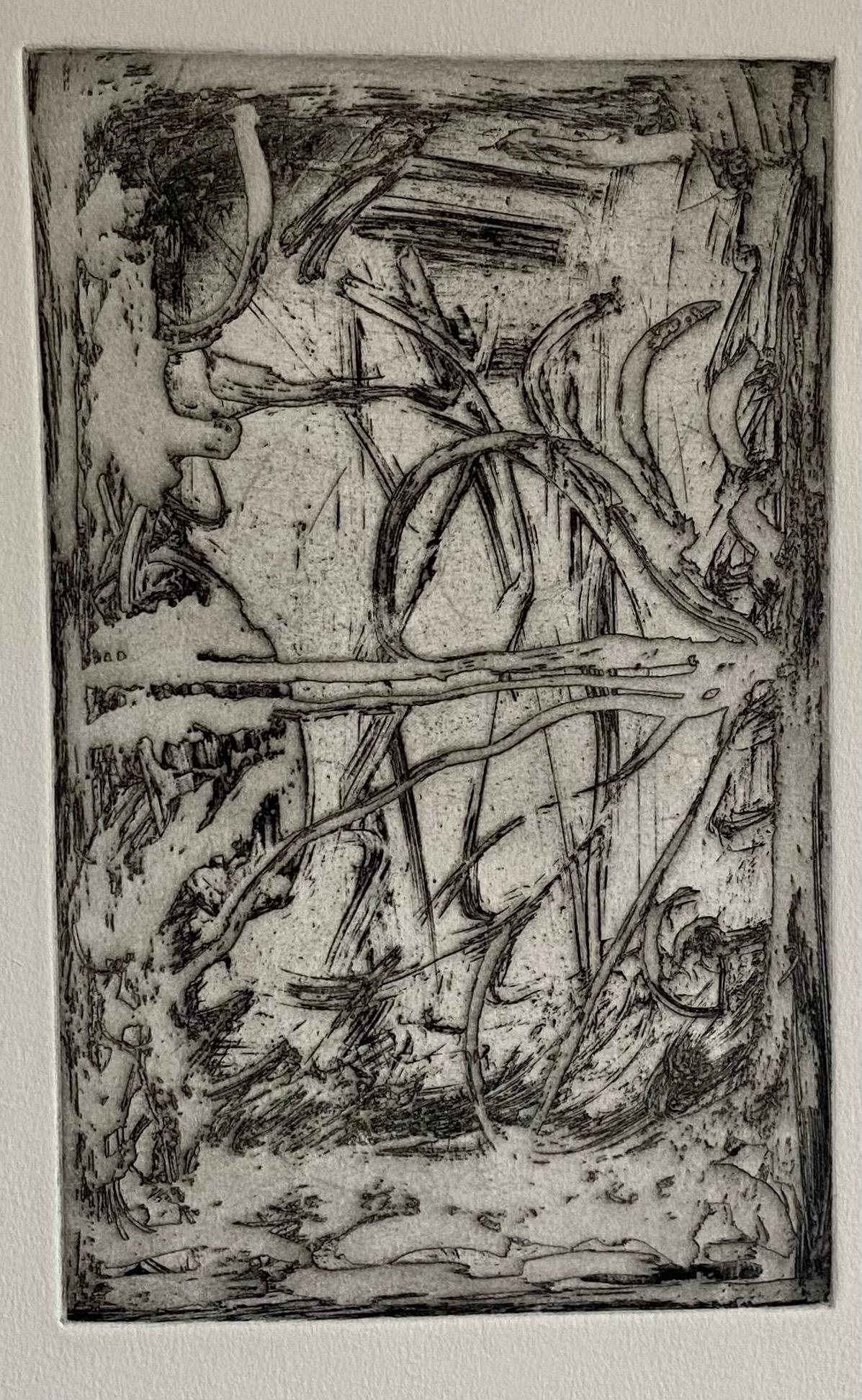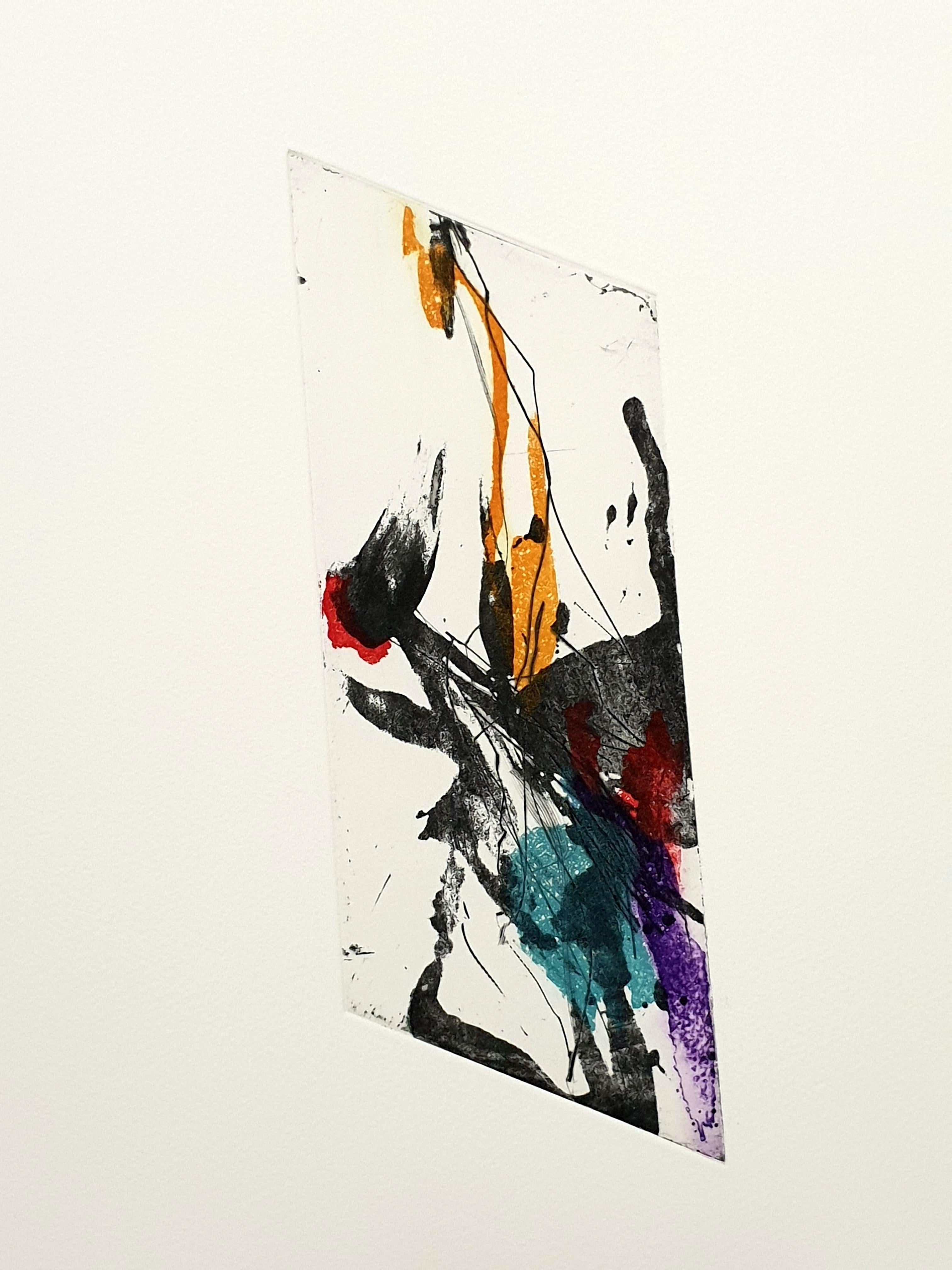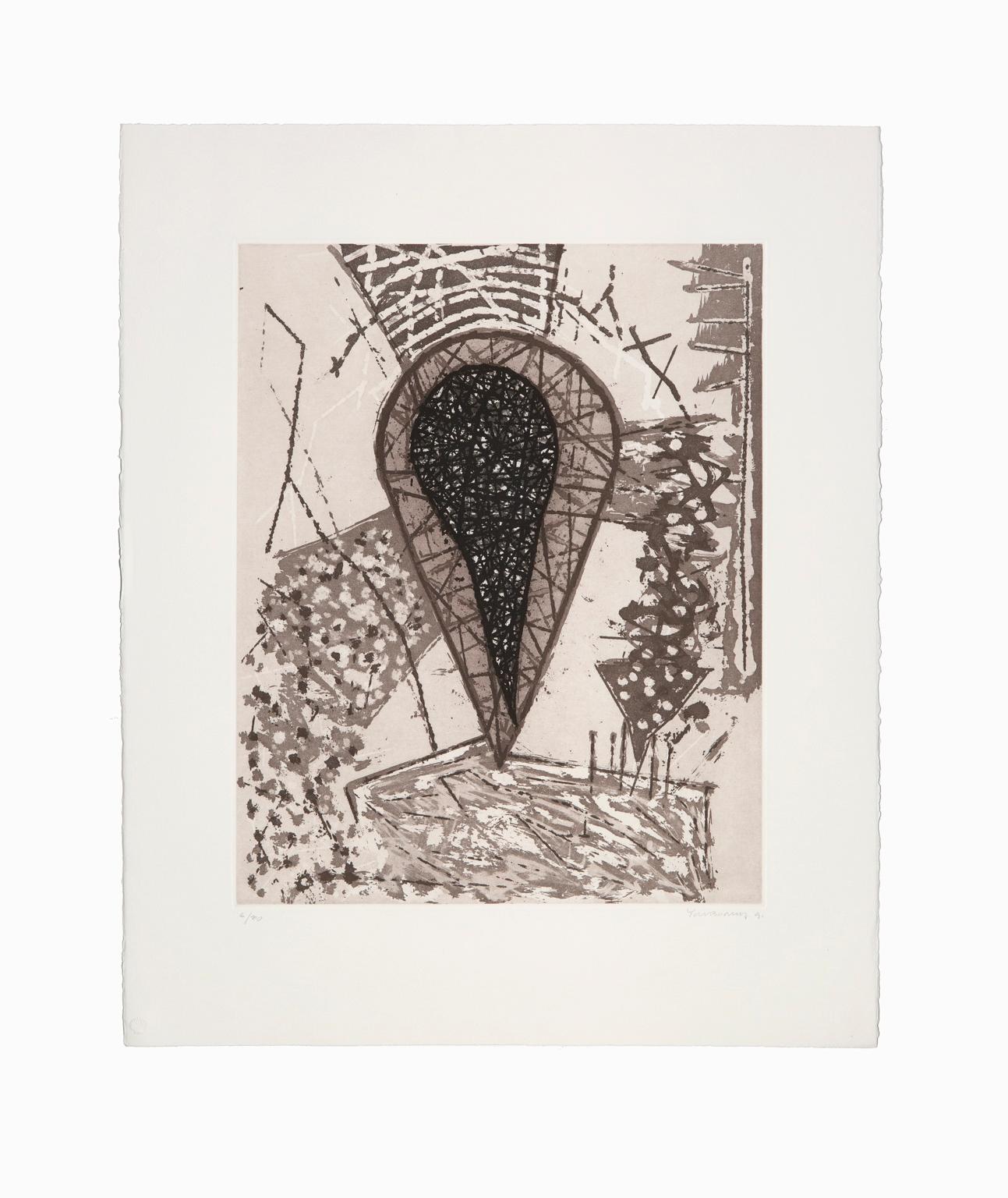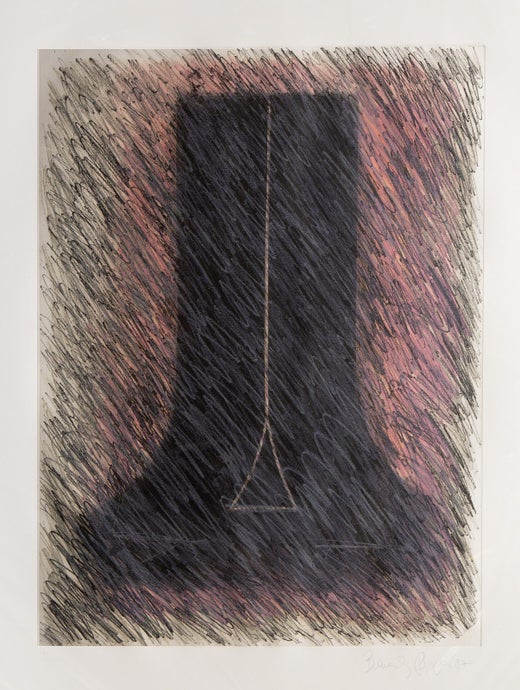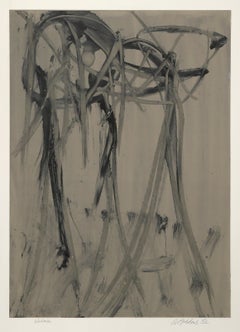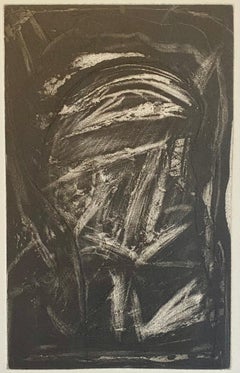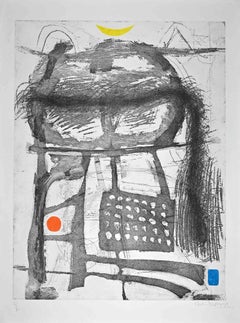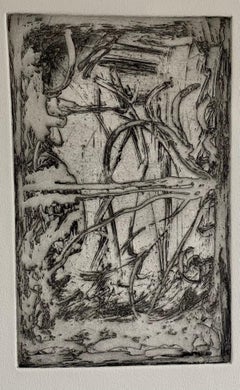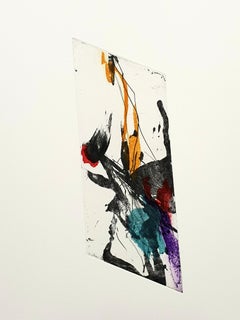Beverly PepperUntitled, Abstract Expressionist Etching by Beverly Pepper1980-1989
1980-1989
About the Item
- Creator:Beverly Pepper (1922, American)
- Creation Year:1980-1989
- Dimensions:Height: 37 in (93.98 cm)Width: 26.25 in (66.68 cm)
- Medium:
- Movement & Style:
- Period:
- Framing:Framing Options Available
- Condition:
- Gallery Location:Long Island City, NY
- Reference Number:Seller: RO830101stDibs: LU46616582992
Beverly Pepper
Celebrated internationally for her large-scale abstract sculptures and site-specific works, provocative environmental artist Beverly Pepper was renowned for her ability to transform unwieldy industrial metals such as Cor-Ten steel and cast iron into seemingly weightless objets d’art.
Born in 1922 in Brooklyn, New York, Pepper studied advertising design, photography and industrial design at Pratt Institute before embarking on a career as a commercial art director. Meanwhile, she also attended the Art Students League and studied art theory at Brooklyn College under Hungarian painter György Kepes, who introduced her to the works of Man Ray and László Moholy-Nagy.
In 1949, Pepper shifted her interest from commercial art to painting, studying in Paris at the Académie de la Grande Chaumière. There, she met Cubist painters André Lhote and Fernand Léger, and visited the studios of Constantin Brâncusi and Ossip Zadkine. Pepper’s work at the time, owing to her experiences in Europe following the war, was largely characterized by a social realist perspective.
Pepper developed a passion for sculpting following a trip to Angkor Wat in Cambodia in 1960. She made her debut in 1962 with a series of carved tree trunks at a gallery in Rome. That same year, Pepper was invited to exhibit at the “Festival of Two Worlds” show in Spoleto, Italy alongside the likes of Henry Moore and Alexander Calder. To prepare for the exhibition, Pepper quickly learned how to weld and soon became an accomplished metalworker — an unusual skill for women at the time.
By the late 1960s and 1970s, Pepper became known for her stainless-steel abstract and still-life sculptures such as Matera Scatolata. She also created several abstract geometric, foil-embossed collage prints including Collage 1 and Collage 3. In later years, she used heavier materials including bronze, iron and Cor-Ten steel in her modern monumental works such as Curved Presence.
Throughout her sculpting career, Pepper had countless solo exhibitions and participated in group shows, and won several awards, including the Allied Arts Honor Award by the American Institute of Architects in 1999, the Alexander Calder Prize in 2000 and the International Sculpture Center Lifetime Achievement Award in 2013. Her sculptures are part of the collections of the Metropolitan Museum of Art in New York, the Hirshhorn Museum and Sculpture Garden in Washington, D.C. and the San Francisco Museum of Modern Art, among others.
On 1stDibs, discover authentic Beverly Pepper sculptures and prints.
- ShippingRetrieving quote...Shipping from: Long Island City, NY
- Return Policy
More From This Seller
View All1960s Abstract Expressionist Abstract Prints
Aquatint, Etching
1980s Abstract Expressionist Abstract Prints
Monotype
1980s Abstract Expressionist Abstract Prints
Etching, Aquatint, Monotype
1980s Abstract Expressionist Abstract Prints
Lithograph
1980s Abstract Expressionist Abstract Prints
Etching, Aquatint
1980s Contemporary Abstract Prints
Etching, Aquatint
You May Also Like
1980s Abstract Expressionist Prints and Multiples
Etching, Aquatint
1980s Abstract Abstract Prints
Etching
1980s Abstract Expressionist Prints and Multiples
Monoprint
1990s Abstract Expressionist Abstract Prints
Etching
1990s Abstract Prints
Etching, Aquatint, Lithograph, Monotype
1990s Abstract Expressionist Abstract Prints
Etching
Read More
Romare Bearden’s Humanity Infuses His Bright, Bold Art
Through collage, painting and printmaking, the artist foregrounded Black life in America in revolutionary new ways.
Chryssa’s 1962 Neon Sculpture Was Way ahead of the Art-World Curve
By working with lettering, neon and Pop imagery, Chryssa pioneered several postmodern themes at a time when most male artists detested commercial mediums.
